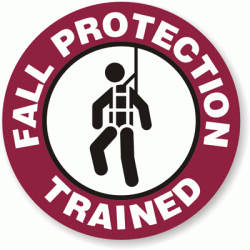There’s a newcomer to OSHA’s top 10 list of violations that it cites every year: Fall Protection – Training Requirements.
While physical fall protection violations, like failing to install guard-rails or provide fall protection equipment, continue to feature at the top of the list, this is the first time that training requirements as a stand-alone category has made it onto OSHA’s preliminary list of most-cited violations has featured.
The fact that OSHA has doled out so many citations for such training-requirement violations reflects its increasing commitment to reduce injuries and deaths from trips, slips and falls – the most common cause of workplace injuries in the U.S.
Overall, OSHA issued about the same number of citations in fiscal year 2017, which ended Sept. 30, than it did in the previous 12 months, but the big change was the new addition, which pushed Electrical – General Requirements off the list.
The 10 most-cited OSHA violations were:
• Fall protection: 6,072
• Hazard communication: 4,176
• Scaffolding: 3,288
• Respiratory protection: 3,097
• Lockout/tagout: 2,877
• Ladders: 2,241
• Powered industrial trucks: 2,162
• Machine guarding: 1,933
• Fall protection – training requirements: 1,523
• Electrical – wiring methods: 1,405
Training done right
There are four levels of fall protection training:
• Awareness – Awareness-level training generally consists of brief, on-site sessions that provide an overview of fall hazards, fall protection equipment, and how it should be used.
• Authorized-user – A best practice to keep employees safe and comply with OSHA is to have any worker exposed to fall hazards undergo authorized-user training. This training is specialized for the type of job and specific fall hazards employees will be exposed to.
• Competent person – This covers a wider breadth of fall hazards because this employee, typically a supervisor, should understand all types of fall hazards and methods of protection, as well as applicable standards.
The competent person needs a higher level of training and knowledge because they should be able to address any fall hazard situation in the organization, evaluate it, and recommend solutions. This employee also needs to recognize whether other workers are misusing equipment or working in unsafe conditions.
• Qualified-person training – This person typically has a specialized degree or training that qualifies them to address technical situations, such as making certified anchorage points or designing horizontal safety systems.
The employer should designate someone who has sufficient training and a reasonable level of knowledge in fall protection to be the on-site “qualified person.”
Make sure to log it all
Keep accurate and detailed records to show that you vetted the training organization you use before hiring them.
OSHA also often requires detailed training records, such as dates and employee attendance.
